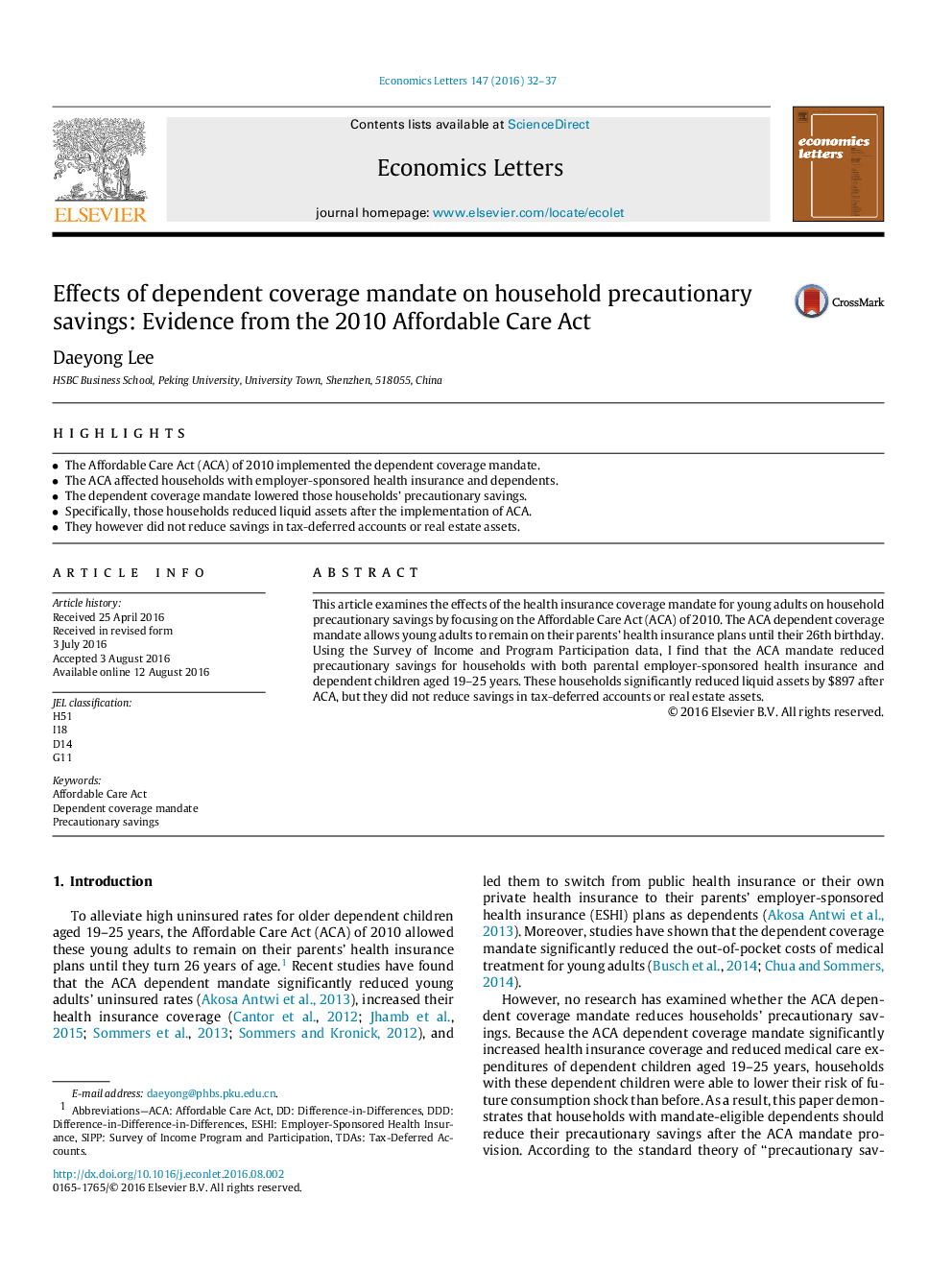| Article ID | Journal | Published Year | Pages | File Type |
|---|---|---|---|---|
| 5058064 | Economics Letters | 2016 | 6 Pages |
â¢The Affordable Care Act (ACA) of 2010 implemented the dependent coverage mandate.â¢The ACA affected households with employer-sponsored health insurance and dependents.â¢The dependent coverage mandate lowered those households' precautionary savings.â¢Specifically, those households reduced liquid assets after the implementation of ACA.â¢They however did not reduce savings in tax-deferred accounts or real estate assets.
This article examines the effects of the health insurance coverage mandate for young adults on household precautionary savings by focusing on the Affordable Care Act (ACA) of 2010. The ACA dependent coverage mandate allows young adults to remain on their parents' health insurance plans until their 26th birthday. Using the Survey of Income and Program Participation data, I find that the ACA mandate reduced precautionary savings for households with both parental employer-sponsored health insurance and dependent children aged 19-25 years. These households significantly reduced liquid assets by $897 after ACA, but they did not reduce savings in tax-deferred accounts or real estate assets.
